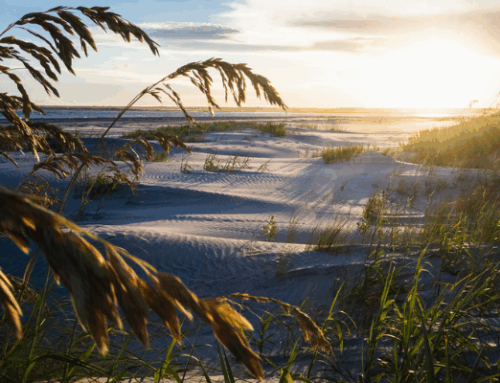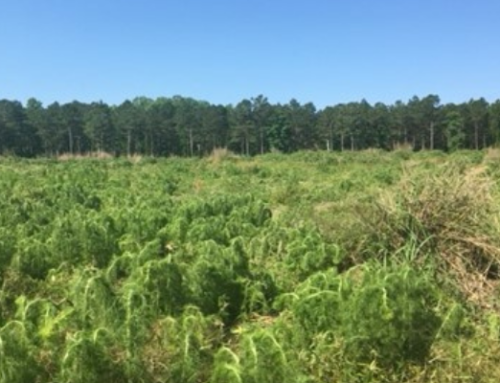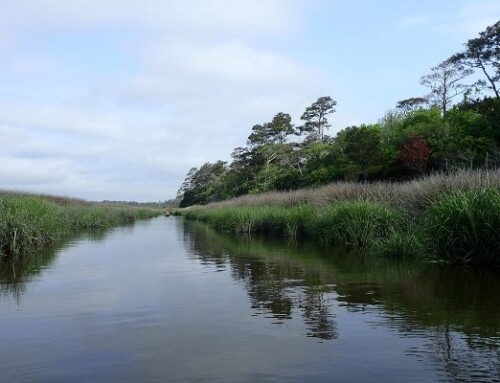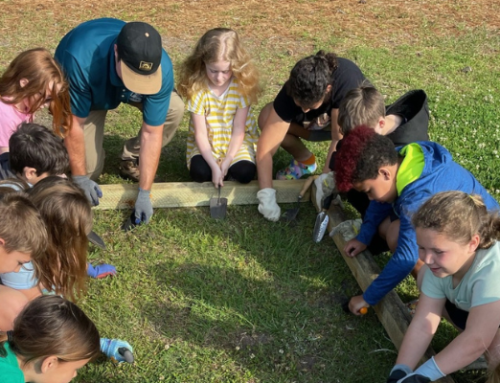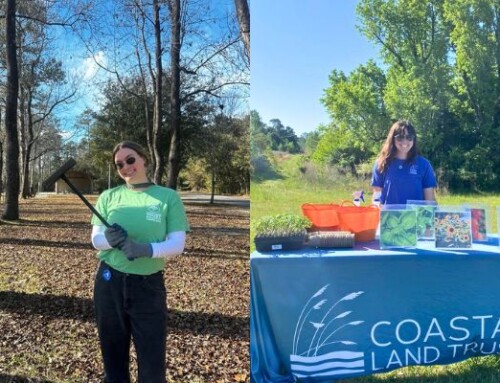Take a walk through North Carolina’s coastal forests, and you might hear a distinctive tap-tap-tap echoing through the pines. While our coast is famous for its shorebirds and waterfowl, one of our most fascinating residents is actually a woodpecker – the federally endangered red-cockaded woodpecker (Dryobates borealis), a species that calls our mature pine forests home.
Despite their name suggesting a flashy appearance, red-cockaded woodpeckers (RCWs) are mostly black and white, with only males sporting a small red streak on each side of their head. This “cockade” is quite challenging to see in the field which makes identifying them difficult. About the size of a familiar backyard robin, these woodpeckers are often mistaken for their cousins, the downy or hairy woodpeckers.
Looks aside, there’s so much more to these feathered friends. RCWs tend to live in groups consisting of a breeding pair and up to four of their offspring that act as “helpers” for raising the next generation. This cooperative breeding system is so rare that scientists estimate less than 10% of bird species worldwide practice it (Cockburn 2006).
What is truly remarkable about RCWs is that they only nest in mature (60 – 100-year-old) longleaf pines. They are also the only North American woodpecker to excavate their cavities in live pine trees (vs. dead ones). Mature longleaf pine trees, and often those with red heart disease – a fungus that softens the inner core of a mature longleaf pine tree – are preferred because the softer inner wood of the tree is much easier to excavate for a nesting cavity. These trees are also preferred because of their fire resistance and the sticky pine resin that drips out the cavity, keeping predators like snakes away. According to the U.S. Fish and Wildlife Service, it takes a family about 1-3 years to dig out a pine tree cavity in longleaf pines.
The story of the red-cockaded woodpecker is intimately tied to the fate of our longleaf pine forests. While these magnificent forests once covered approximately 90 million acres across the Southeast, today only 5% remains. But there’s hope! Conservation organizations like NCCLT, The Nature Conservancy, the U.S. Forest Service, and the NC Wildlife Resources Commission, are working not only to protect these forests but also to restore and manage these forests with thinning and/or prescribed fire. In addition, some organizations are constructing artificial cavities designed specifically for RCW nests and installing them in live, mature longleaf pines to support successful colonization of RCW groups to new areas.
Want to discover more about these fascinating birds and their natural habitat? CLICK HERE to see our GIS StoryMap: Growing the Croatan. You’ll learn how fire-maintained longleaf pine forests create the perfect home for these remarkable woodpeckers, and how our conservation work is helping secure their future.
Special thanks to NC Wildlife Resource Commission for their nest installation work at the Coastal Land Trust’s Bern Preserve in November 2024. (see pictures below)





